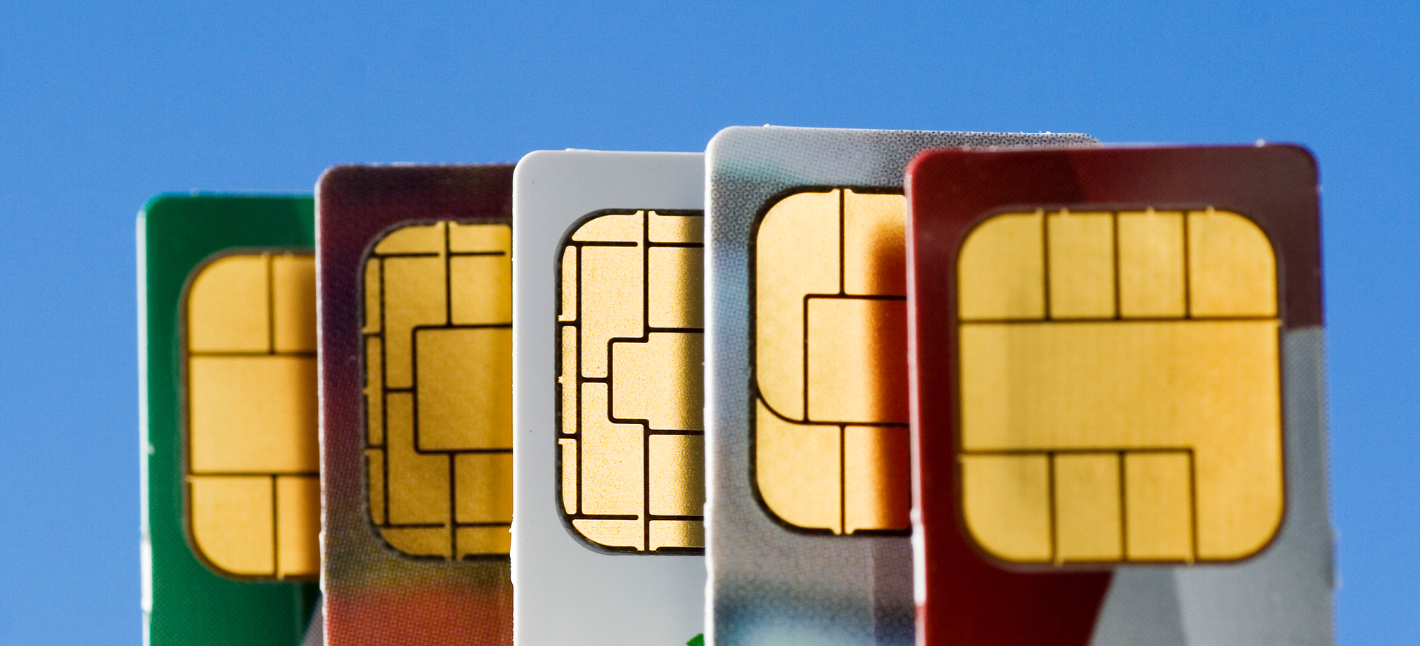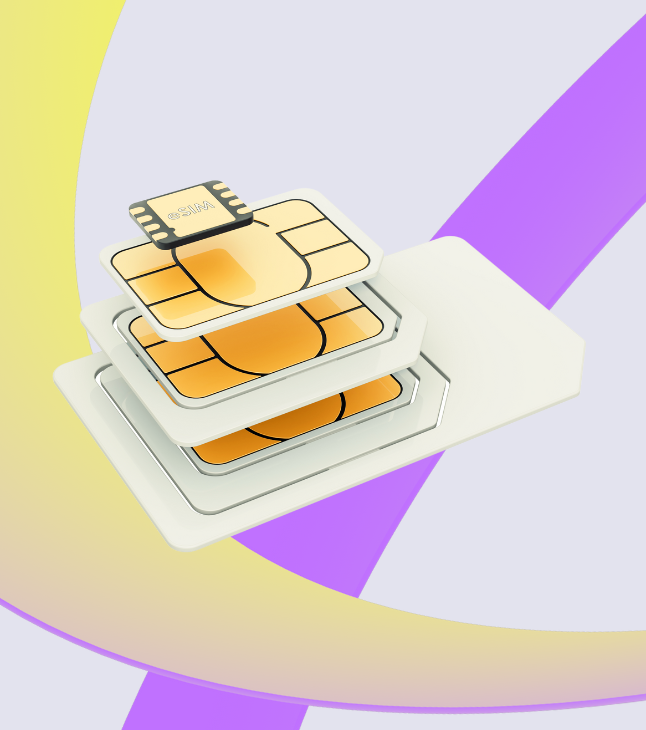Cellular connectivity is one essential way to connect IoT devices, for which a SIM card is a necessity.
SIM is an acronym for a subscriber identity module or subscriber identification module. A SIM card is an integrated circuit with a card operating system (COS). It is designed to securely store the international mobile subscriber identity (IMSI) number and its associated key, which are used to identify and authenticate subscribers on mobile IoT devices.
Introduction to SIM Card Type
There are different types of SIM cards for unique needs. There are three types of SIM cards based on their insertion on the device. These three types include:
- Standard SIM card (Mini-SIM): This is the largest form factor of SIM cards and was the most commonly used type until the introduction of smaller sizes. It measures approximately 25x15mm and requires a larger SIM card slot in the device.
- Micro SIM card: Micro SIM cards are smaller than standard SIM cards and measure about 15x12mm. They were introduced as a space-saving option for devices that couldn’t accommodate the larger standard SIM card.
- Nano SIM card: Nano SIM cards are the smallest form factor currently in use and measure about 12.3×8.8mm. They were introduced to reduce SIM cards’ size further, allowing manufacturers to create thinner devices with limited space for SIM card slots.
It’s worth noting that adapters can convert a smaller SIM card into a larger size, allowing it to fit into a device with a larger SIM card slot.
In addition to these SIM cards, they are divided into four SIM card dimensions, as given below.
What are the differences between SIM cards?
Suppose you’re designing a device that relies on cellular connectivity. In that case, you should be aware of the many SIM form factors available so that you can make the optimal option and design accordingly.
SIM form factors are the defined sizes produced by subscriber identity modules (SIMs). SIM form factors are classified as 1FF, 2FF, 3FF, 4FF, and MFF2. Each SIM generation is smaller than the previous one. MFF2 is an abbreviation for the machine-to-machine form factor.
All the form factors have the same capabilities, but their proportions change, making them more appropriate for devices. 2FF, 3FF, and 4FF SIMs must be inserted into a device; however, MFF2 SIMs must be embedded, which is why they are also known as eSIMs, and 1FF SIM cards are no longer in use. While they are commonly referred to by the generation (1, 2, 3, 4), subsequent SIMs are sometimes referred to as “mini SIMs” (2FF), “micro SIMs” (3FF), “nano SIMs” (4FF), and “eSIMs” or “embedded SIMs” (MFF2).
What are the sizes of SIMs available?
SIM cards and their dimensions have decreased over time, allowing product designers more freedom. Here are the dimensions of each SIM card form factor:
- 1FF: 85.6mm × 53.98mm × 0.76mm
- 2FF (Mini SIM): 25mm x 15mm x 0.76mm
- 3FF (Micro SIM): 15mm x 12mm x 0.76mm
- 4FF (Nano SIM): 12.3mm × 8.8mm × 0.67mm
- MFF2 (eSIM): 5mm x 6 mm x 1mm
The 4FF form factor or Nano SIM cards are considerably smaller and narrower than their predecessors. Therefore, it is an excellent networking solution for small IoT or M2M devices like wearables or mobile payment devices.

Traditional SIM Cards: How They Work and Their Limitations
Classic SIM cards or physical SIM cards are still the most popular type of SIM cards to date. Mobile Network Operators (MNOs) generally provide traditional SIM cards and must be physically inserted into mobile devices. While they are removable, these cards can not simultaneously work on multiple carriers.
Micro and Nano SIM Cards: The Evolution of Traditional SIMs
Traditional SIM card has different form factors. These form factors are evolving according to the latest technology trends. Here is a short roadmap of different types of SIM cards:
- 1FF SIM card (Standard SIM card): A size of credit card introduced in 1991
- 2FF SIM card (Mini SIM card): 12 times smaller than standard SIM, SIM cards launched in 1996
- 3FF SIM card (Micro SIM card): built-in 2003, 1cm smaller in length and 0.2cm smaller in width for compact mobile devices
- 4FF SIM card (Nano SIM card): introduced in 2012, the smallest physical SIM
- MFF2 SIM card (eSIM card): was introduced in 2016 as a standard for embedded SIM cards. It is directly attached to your circuit board.
Everything you need to know about IoT SIMs
Embeded SIMs & eSIMs: The Next Generation of SIM Technology
Embedded SIM cards & eSIM are upgrades to the traditional SIM card allowing mobile devices to overcome past limitations. An embedded SIM is an electronic chip embedded in a mobile device with a smaller form factor (MFF2) than plastic SIM cards. eSIMs or iSIMs are among the latest technology trend where the SOCs contain the SIM chipset.
The Benefits of eSIMs: Improved Flexibility, Security, and Functionality
Modern SIM cards are an upgrade to a standard SIM card in several ways, keeping up with modern technology needs. Here are some sim card differences and benefits of the eSIMs:
- Multiple carrier profiles: eSIMs support multiple carrier profiles so that the users can use different networks without physically swapping the SIM cards.
- Smaller form factor: eSIMs can be smaller than physical SIM cards. MFF2 is the smallest form factor and
- Users can register with any new mobile network operator just through their phones without visiting a retail outlet.
- eSIMs are more secure and can protect against any maneuvering without a physical SIM card.
Choosing the Right SIM Card Type: Key Factors to Consider
When choosing the right SIM card type, there are several key factors to consider:
- Device compatibility: Ensure that your SIM card type is compatible with your device. Different devices have different SIM card slot sizes, so verify which type of SIM card your device supports (standard, micro, or nano).
- Form factor: Consider the physical size of the SIM card and whether it will fit into your device’s SIM card slot. Smaller form factors like micro SIM or nano SIM allow for more compact device designs.
- Network compatibility: Check if the SIM card type is compatible with the network you intend to use. SIM cards are typically available in different variants for various network technologies (GSM, CDMA, LTE, etc.). Ensure that your chosen SIM card type supports your carrier’s network bands and technology.
- Future compatibility: Consider the longevity and future-proofing of the SIM card type. Nano SIM has become the standard for many modern devices, so choosing this smaller form factor may provide better compatibility with future devices.
- Ease of switching: Evaluate the ease of switching or transferring your SIM card to another device. Smaller SIM card types like nano SIM often require adapters or specialized tools to fit into devices with larger SIM card slots.
- Local availability: Ensure that your selected SIM card is readily available in your region or country. Some areas may have limited availability of certain SIM card types, so choosing one that you can easily obtain is important
Considering these factors will help you select the appropriate SIM card type that fits your device, network requirements, and future needs.
Order your free test IoT SIMs today
Freeeway is a highly specialized M2M connectivity service provider for the whole Internet of Things industry and all linked devices. Our goal is to connect everything. We help businesses add connectivity to their goods and provide them with the tools and processes they need to charge their consumers for connectivity. As the article covers, different IoT SIM cards help with unique needs. Contact us if you are curious to learn more about different types of SIM cards. We would be happy to assist you with your IoT connectivity needs.





